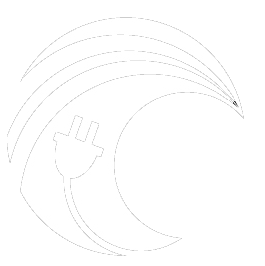By Ali Trueworthy 26 October, 2018
After 11 days of testing in the O.H. Hinsdale Wave Research Lab (HWRL), Alex Hagmuller and Max Ginsburg of Aquaharmonics left with high hopes. The team of Oregon State University graduates is testing a 1/20th scale version of the device concept that won the U.S. Department of Energy’s Wave Energy Prize. The design-build-test competition, which began in 2015, was “designed to increase the diversity of organizations involved in Wave Energy Converter (WEC) technology development, while motivating and inspiring existing stakeholders.” Around that time in 2015, Alex and Max’s work on their own small-scale WEC had reached a standstill- to move forward they would need to start performing more sophisticated, costly tests. Without those tests, they could not continue improving the WEC. As Alex tightens a bolt on the inside of the device, which he is getting ready to put back in the wave flume, he recalls their position back in 2015 and smiles, “it was like Wave Energy Prize was made for us.”
Alex works on the device between tests.
The device has seen improvements since the beginning of the competition, including changes to the external structure, the internal mechanisms, and the internal sensors. The sensors are what allow Alex and Max to collect data that will help them better understand the WEC. The data they collected at HWRL will influence their next, 1/7th scale prototype which they hope to test at a grid-connected site in Hawaii next year.
Looking at the 1/20th scale device, the enormity of the 1/7th or full-scale device is daunting. Outside the flume, a crane lowers the device until its main compartment hangs at Alex’s waist height. This allows him to work on the inside, watertight portion of the device. The bottom most portion hangs about a foot above the ground. It is hard to imagine what the 50 ft wide and 56 ft tall full-scale device would look like with Alex tinkering away inside. As large as the 1/20th scale device is, when it is lowered into the 360 by 12-foot flume, it looks like I could scoop it out with a pool skimmer. But just as the flume reduces the scaled device to a lily pad on a pond, the vastness of the deep blue diminishes the immensity of all ocean-going equipment, making it is easy to overlook the logistical challenges of developing and testing wave energy devices.
Alex and Max get the Aquaharmonics WEC and sensors ready for test in the flume at O.H. Hinsdale.
Buttoned up and in the wave flume, the device is ready for waves! HWRL’s Faculty Research Associate Bret Bosma runs the wavemaker, a piston device which moves horizontally in the flume to create waves, for Aquaharmonics. He creates a wave spectrum- a menu of wave frequencies and their corresponding amplitudes from which the wave maker can choose. Bret can create a scaled spectrum representative of waves that a full-sized device would likely see in the open ocean. Once the waves begin, Max minds the screens on which live device data is being displayed and Alex looks over the flume to make sure the device is performing as expected. It checks out, and they can relax, as a round of testing may take hours. At any moment in testing Max can tell us the position, power generation, and even the temperature inside the WEC as well as many other data points being recorded.
Data is, at this stage, what it’s all about. The computers, monitors, and electronic equipment certainly surpass the WEC in both weight and volume. All the cords running to and from the flume are enough to make any stranger to underwater work a little nervous. But at HWRL, they are not strangers to splash and submersion, and the test runs safely and smoothly. As a matter of fact, these sorts of tests have been ongoing for decades in the flume. Bret places the start of major wave energy research at OSU and in HWRL in the 1990s, and since then, the lab has seen 10s of WEC prototypes tested.
Aquaharmonics WEC is lowered into the wave flume with a crane.
In 1972, before Max, Alex, or Bret even set foot in an engineering classroom, HWRL was created to study the stability of ocean structures. It is still used for that today, but with the hard work and innovation by ocean, wave, and energy researchers across the world, it has become so much more. For those in the field of wave energy, it has become a place where minds meet, and for Aquaharmonics it has provided the ability to understand, scale, improve, and look to their bright future in wave energy technology.



